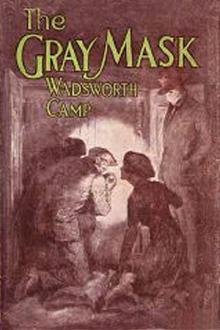Low Country J. Jones (best books to read all time .txt) 📖

- Author: J. Jones
Book online «Low Country J. Jones (best books to read all time .txt) 📖». Author J. Jones
The Joneses have always felt separated by the lines of legitimacy and the law from the other contributors to the community. The two families who separately and as business partners have owned most of the commercial and residential real estate around Horry County since eighteen hundred and something, the Burroughses and Chapins, rode into town on the railroad, by way of timber. The first railroad between Conway and New Town opened in 1900 and was commissioned so that the Burroughses could move and sell more lumber. The Seaside Inn, the very first hotel in Myrtle Beach, was built when Myrtle Beach was still New Town in 1901 and the Joneses were in Cool Spring.
Before tourism kept us afloat, the longleaf pine forests were sucked dry of the clear, sticky sap to make turpentine and tar for the rest of the world. As far as China, which is about as far as it gets, Carolina tar was famous for its hold. The sap drips still from the longleaf and loblolly pines, sticking to bare feet and fingertips the same as always. A hard scrub with some paint thinner will wash the sap from skin, and nothing but time gets out an indigo stain. Before rice, cotton, or turpentine took off as Low Country staples, enslaved people stirred and beat the soaking indigo plants in brick vats still lined wavy blue in the woods above Charleston to transform this swamp-grown Indigofera suffruticosa into blocks of blue mud that dried into gold. For a time in the eighteenth century, during the reign of Queen Anne and during the Golden Age of Piracy, the Long Bay was the world’s largest producer of indigo, but not the wild indigo indigenous to the Low Country that grows in sweet stalks of pink flowers that resemble its cousin delphinium, named in Greek for its flowers that bloom in the shape of dolphins. A man known as “Alligator” Stephens published an instructional on getting Bahama indigo from seed to plant to commodity in 1745, but it was Eliza Lucas Pinckney who allowed the Low Country’s blood to run blue. The mother of indigo. The mother of patriots. The plantation heiress. Born in Antigua on a British sugarcane plantation before moving to what is now called Bluff Plantation of Wappoo Creek above Charleston, she was sent in 1740 the seeds for Bahama indigo and set about cultivating the hardiest crop and its subsequent production, stealing the methods from the Africans she enslaved. Production slowed only when the colonies declared themselves America, an independent nation, and once the war was won, something called the cotton gin had come to South Carolina. Pinckney is credited by some as the author whose imagination penned the South Carolina agrarian economy and sneered at by others as an overrated archetype, a maternal mascot, who got carried away with the gardening. The names of her sons stain the paper of the Declaration of Independence, and during the Revolutionary War, indigo cakes were the currency of the day. The memory of indigo plantations stains the Low Country as the ink of tattoo parlors bleeds into the landscape today. Land, like the rest of us, must have a hard time letting go, and what’s buried is not always treasure. Indigo is the color of the state flag.
Eliza’s future husband, a widowed neighbor, once derided her experiments, possible only with the stolen knowledge and bound hands of enslaved people from Africa. Their marriage is recollected by history as a happy one, his opinion of her as a “little visionary” in one letter might have grown as did her success. If advancements, even the stolen kind, in the Low Country must rely on unchaperoned heiresses, it is no wonder there have been so few. On the subject of pine forests and heiresses, I cannot leave out the legacy of an Elizabeth Chapin. I never knew a Chapin myself, but have wished I knew the heiress to the fortune of the Wall Street mogul Simeon, his daughter Elizabeth. The Joneses, unlike the Chapins, have never been wealthy enough to bank on eccentricity, and Elizabeth wore her nonconforming ideas as fashionably as a mink coat. She was an avid worshipper of a sect that still makes its home off of King’s Highway, and she built a hideaway devoted to worshipping the avatar Meher Baba back in 1944. I stood outside a bar in New York one snowy night long after I’d moved away and was astounded to meet a man who had also grown up in Myrtle Beach. My hometown was not the same as his, however: mine is a place reputed to have the highest number of strip clubs per capita in America, with a NASCAR Café and beach shops that specialize in Confederate flag bikinis, and this young man had grown up among the untapped pine trees of Meher Baba’s virgin soil. While I celebrated my cousin Chris’s tenth birthday at the Briarcliffe Mall Hooters restaurant, this kid was across the street wrapped in monk’s robes and meditating in the middle of a wildlife sanctuary. Elizabeth’s abbreviated story has always floated around town like those long aerial banners advertising happy hour specials and boogie-board rentals that swim across the sky above sunbathers, and I have always envied her the freedom to pay for peace and quiet, and wished it for the women in my story.
While that kind of New Age spirituality might find tolerance on the north end of





Comments (0)